Health experts agree that wearing a facial covering is a key element of coronavirus mitigation strategies. But which type is most effective? There’s a lot of confusing information out there, so we did some research of our own to find out what health experts are saying about masks and the coronavirus.
To start with, it’s important to understand how the virus is transmitted. The virus is primarily transmitted through what scientists call Flugge droplets, the droplets produced by humans coughing or sneezing—or even talking, singing or other activities where breath is expelled. These droplets measure 0.5 to 10 microns. For reference purposes, a human hair ranges from 80 to 100 microns, so these droplets are tiny. But not as tiny as a virus particle, which also spreads the disease primarily by becoming airborne and inhaled. These particles are spheres with diameters of approximately 0.125 micron. Tiny, tiny, tiny!
Perhaps you have seen the CNN video that shows how a mask affects how a cough travels? This is from research at a lab at Florida Atlantic University. It showed that the Flugge droplets travel 12 feet in 30 to 40 seconds, twice as far as recommended social distancing guidelines. The cloud of droplets becomes less dense the further out it goes. According to Dr. Sid Verma, Assistant Professor at Florida Atlantic University, at nine feet, these droplets can linger in the air for two to three minutes, but the concentration is less than it would be at six feet by a factor of eight.
Here’s what they found relative to how far these droplets travel with different types of face coverings:
- A bandana (or a gaiter-style mask) are the least effective, with droplets traveling three feet.
- A folded handkerchief resulted in droplets traveling one foot, three inches.
- A cone-style mask reduced the distance to about eight inches.
- The best results for cloth face masks was achieved with two layers of fabric, traveling only 2.5 inches.
Mask Types
So now let’s look at the types of masks.
- N95 respirator masks are used by first-line health care workers to protect them from airborne particles and liquid. These require fitting to the individual to make sure there is no leakage. As the pandemic continues to take its toll, it is recommended that these masks be reserved for health care workers. The N95 mask filters down to 0.3 micron. According to research, the COVID-19 particle is around 0.1 micron in size but it is usually bonded to something larger, such as a Flugge droplet, making N95 masks effective in blocking these particles.
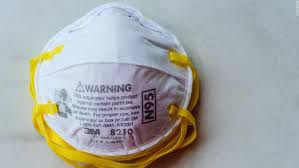
Image credit: 3M
- Surgical masks are loose-fitting disposables. You have likely seen them in your doctor’s or dentist’s office. They come in different thicknesses and with different levels of protection. They have a loose fit and they don’t filter or block very small particles in the air, according to the FDA.
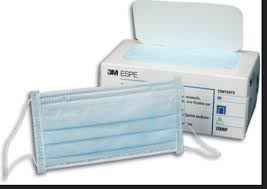
Image credit: 3M
- The CDC recommends all people two years of age and older wear a cloth face covering in public settings and when around people that don’t live in their household, especially when other social distancing methods are difficult to maintain.
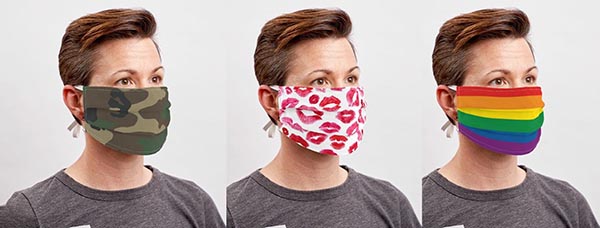
Image compliments of Spoonflower
- Bandanas or gaiter masks are the least effective, but better than nothing.
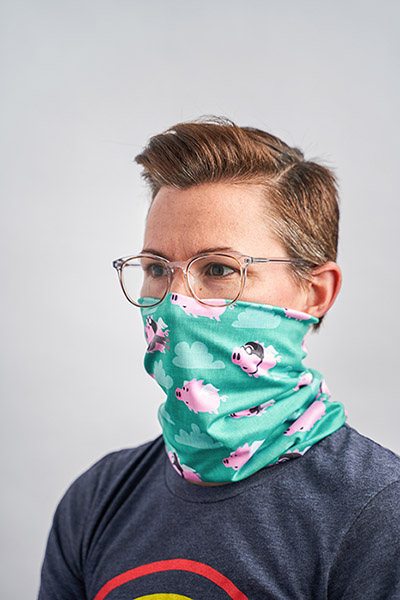
Image complements of Spoonflower
Which Fabric is Best?
There has also been research into the best types of fabrics for cloth masks. The most detailed study I found was this one. It really gets into the weeds in terms of the technical details, so here’s a summary of the findings.
Researchers looked at how well a 32 different types of natural and synthetic fabrics filter particles of a similar size to the virus that causes COVID-19. They found the most effective fabric type at blocking particles was 100% cotton and had a visible raised nap, like flannel or fleece. Synthetic fabrics performed the worst. Tightly woven fabrics typically performed better than loosely woven fabrics or knits. And multiple layers of fabric, especially multiple layers of 100% cotton, performed the best. None of them, of course, were as effective as N95 masks.
As we have noted, wearing a face covering is better than wearing nothing at all, but if you do have a choice, these findings are useful in making that choice.
Mask Examples for the Average Person
I’ve personally used a variety of different masks. For most people, breathability and comfort are probably the most important in selecting a mask type. I found that a tightly woven dual-layer polyester fabric mask I tried was hard to breathe through. My favorite so far is a knitted mask with a pocket for a disposable PM2.5 filter. It is knitted from yarns made primarily of plant-based viscose. The company has plans to add an antimicrobial treatment to the yarns in the future. It features a removable metal band that allows you to fit it more tightly over the bridge of the nose.
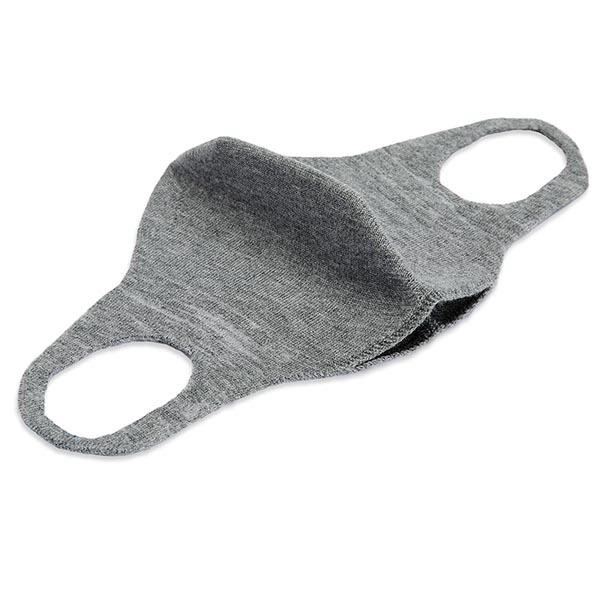
Image compliments of Tailored Industry
A PM2.5 filter (PM stands for particulate matter) filters out particulates as small as 2.5 microns, and the masks are not promoted as PPE. It comes with one filter and replacements are available. They are quite comfortable, and a surgical mask could be inserted in the pocket as well, improving filtration.
Another comfortable one comes from California-based Equipe Athletics. This is a double-layered 100% polyester wind-resistant fleece, obviously washable and reusable. While it is polyester, it does have the fleece raised nap. It fits well and is quite comfortable. The most recent versions are quite stylish.
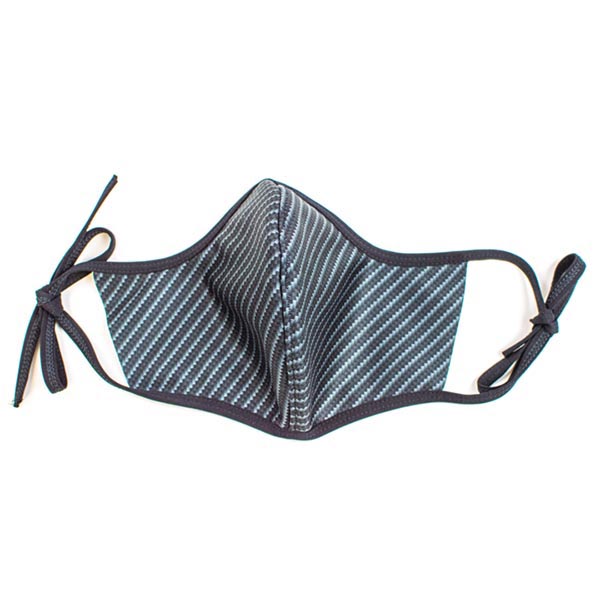
Image compliments of Equipe Athletics
We also looked at masks and DIY mask kits from the likes of Spoonflower, which has a huge variety of styles and fabric choices, including 100% cotton.
VistaPrint has joined the mask-making enclave as well. VistaPrint masks are made from 100% polyester latex-free fabric. Like Spoonflower, VisitPrint has a range of fabric prints to choose from, or you can upload your own design. These masks also have a pocket for a filter. Since there are no specifications for the filters on the website, I spoke with a VistaPrint representative who told me the filters are made from melt-blown non-woven cloth, and they claim they are 95% effective but against what was not exactly clear. It should be noted that surgical masks consist of three layers, with the center one being a melt-blown layer which is the part of the mask designed as the filter. VistaPrint does not position any of its masks as medical grade. Filters are sold separately.
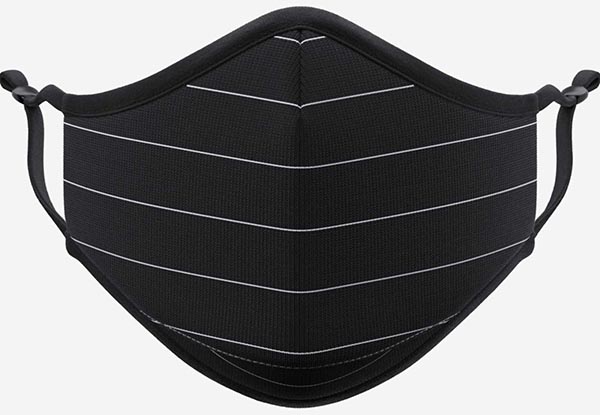
Image sourced from VistaPrint
There are also masks on the market that have valves, such as the one shown below from Cambridge Masks in the UK. These are comfortable because humidity is expelled through the valve. But they also expel particles which can infect others, so they are not recommended for protection against COVID-19.
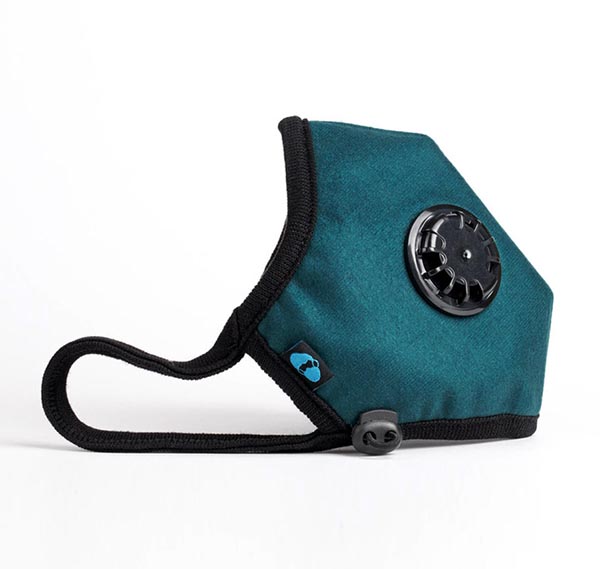
Coming Soon…
There is still a great deal of research and development being done relative to mask efficacy. For example, planarTECH and IDEATI partnered to create a mask that uses graphene and other carbon nanomaterials that take advantage of graphene’s antibacterial/antimicrobial properties. Others are creating masks infused with silver and/or copper. One I came across is constructed with a top layer of 100% copper-infused cotton which covers a dual filter layer that consists of a high efficiency filter and non woven filter lining for ventilation and moisture absorption, and a layer of 100% pure cotton against the skin for protection and comfort. Both copper and silver are known to have antimicrobial properties. A study published in March in the New England Journal of Medicine found that the COVID-19 virus can only survive on copper in a lab setting for up to four hours, as opposed to 24 hours on cardboard, and two to three days on plastic and stainless steel. The jury is still out on full effectiveness of copper- or silver-infused masks, but is something to keep an eye on as more data becomes available.
The Bottom Line
Hopefully this article has provided some helpful guidance about the different mask types and given you ideas about which masks are most suitable for your purposes.
The key is to wear some type of facial covering to protect yourself and those around you from the coronavirus. It is important to wear masks correctly—I’ve seen so many photos of people wearing them with their nose hanging out, just covering their mouth, or worse yet, like some sort of chin beard… please cover both your nose and mouth with whatever mask type you choose. And remember to socially distance as much as possible.
Masks are likely to be with us for the long haul, especially in the United States where the virus is rampant with no clear end in sight. Choose a mask style that is comfortable and aligns with your persona. If you are looking for stylish masks that can be coordinated with your wardrobe, there are plenty of options from folks like Spoonflower, VistaPrint, and others, or you can even make your own. There are plenty of YouTube videos with instructions for sewing your own masks or you can take advantage of Spoonflower’s DIY kits. As an added benefit, Spoonflower just launched a Buy a Mask, Give a Mask program in partnership with the Masks Now Coalition. For every custom mask sold, one will be donated directly to the people who need them most—patients, healthcare workers, at-risk community members, and essential workers, including postal workers, grocery store workers, manufacturing personnel, and more.
WhatTheyThink contributor and Inkjet Insight co-founder Mary Schilling has also set up an Etsy shop through which she sells custom-printed masks. (She prints them on a 6-mil, machine washable, water-resistant polyester which is a lightweight, wicking, wrinkle- and tear-resistant cloth from Aaron Graphics.) Read more about Mary’s masks here and watch a video here.
So mask up, everyone, and let’s beat this thing!















Discussion
By Gordon Pritchard on Jul 20, 2020
The title of the article is: "How Effective is Your Cloth Mask?"
The consensus is that public health officials generally don't believe that wearing a mask prevents anyone from catching a virus that is already floating around in the environment. If viral particles are nearby, they have an easy path around a surgical (which must be custom fitted) or fabric mask. And in the case of a fabric mask, wearers may well be wafting in particles small enough to flow right through the fabric.
It's likely not harmful to wear these masks, but it doesn't look, according to studies, like there is a whole lot of benefit.
By Dan Adler on Jul 20, 2020
Masks are critical to ending this pandemic! Thanks Cary for the great information.
As Cary mentions, the kind of mask you wear does make a difference. Take a look at this video with Bill Nye The Science Guy where he shows how to do a candle test to check just how effective your mask is. You might be surprised at the quality of what you have.
https://www.youtube.com/watch?v=gqG0BgOT4fk
Stay safe, and keep those masks on!
By Cary Sherburne on Jul 22, 2020
Here's an update on masks for front-line workers. Looks like it could make a big difference! https://www.cnbc.com/2020/07/21/mit-researchers-designed-reusable-n95-face-mask-for-healthcare-workers.html
By Chris Lynn on Jul 22, 2020
Here's a really good video on the science behind N95 masks: https://youtu.be/eAdanPfQdCA
By Cary Sherburne on Jul 22, 2020
Chris Lynn, thank you! Excellent video and explanation of N95 masks!!
By Robert Arena on Jul 22, 2020
I did check out the Bill Nye video as I am such a fan. But he lost me when he changed the parameters of the test to prove his point. It really seemed that he puffed harder and got closer to the candle with each successive test.
Gordon, your statement seems to strongly come down in the "Masks are silly" court. I would be interested in seeing the references. Masks and distancing seems to be our only hope other than complete isolation. Is hope all we got?
By Gordon Pritchard on Jul 22, 2020
@ Cary - Your piece was about cloth masks not a siicone mask that's still in development.
@ Robert - Unfortunately Covid 19 has become a political issue as well as a potential new source of profits for the pharmaceutical industry so it is difficult to get unbiased information. Also, most recommendations include social distancing and hand washing so it 's difficult to isolate the efficacy of just face mask usage. Since the US is a particularly litigious society, reading the disclaimers (the "mouse print") on the packages of commercially available face masks you'll likely notice that viruses are not included in the list of items that the face mask is effective as a barrier for.
There is plenty of information available for one to rummage through on the web. Ideally one should review literature prior to 2019 on face masks and viruses as that info is likely less biased.
You can start here:
https://www.globalresearch.ca/face-masks-pose-serious-risks-healthy/5712649
https://www.livescience.com/are-face-masks-effective-reducing-coronavirus-spread.html
https://www.sacbee.com/news/nation-world/national/article240780786.html
https://conservativedailypost.com/expert-explains-face-masks-are-serious-risk-to-healthy-make-covid-more-deadly/
By Gordon Pritchard on Jul 23, 2020
These two videos may provide additional clarity:
https://youtu.be/eVJbenwzR1s
https://youtu.be/Ded_AxFfJoQ
By Robert Arena on Jul 23, 2020
I did look at your references Gordon. And I checked them and it seems that some of the facts were retracted, some of the sources are questionable. I guess we get to make our own mind up and perhaps that is why we see the USA's number climbing. Me, I am wearing a mask.
https://www.newsguardtech.com/wp-content/uploads/2020/03/GlobalResearch.ca-3-20-20.pdf
https://www.livescience.com/are-face-masks-effective-reducing-coronavirus-spread.html
https://www.sacbee.com/news/nation-world/national/article240780786.html
updated o5 April
https://www.cleveland.com/news/2020/04/do-these-early-mask-bashers-owe-us-an-explanation.html
https://www.newsguardtech.com/wp-content/uploads/2020/05/ConservativeDailyPost.pdf
Truly appreciate the article Cary. Wear a mask. Take care for yourself. Take care for others.
By Mike Cloghessy on Jul 23, 2020
The whole face mask push is more an exercise in compliance not science. Any virus can just as easily enter through your eyes or the pores in you skin. The old adages of cover your mouth and nose when you cough or sneeze and washing your hands often is a true as ever and as effective as ever. If this virus is as serious as they make it out to be, then all should be wearing N-95 masks and vinyl gloves and changing them every hour.
By Chris Lynn on Jul 23, 2020
It's frustrating, @Mike Cloghessy, that this needs to be said yet again: my mask protects YOU from ME, not the other way round. Wear a mask, not to be in compliance, but because you respect the health of your fellow citizens.
By Mike Cloghessy on Jul 23, 2020
Well then we are assuming everyone has the virus. That's called "herd immunity". End of crisis.
What you are displaying is virtue signalling. Are we going to repeat this scenario every single time we have a novel virus? We should protect the vulnerable and let everyone else alone. That is exactly what they did in Sweden and South Dakota.
By Chris Lynn on Jul 23, 2020
@Mike, your illogical response and your characterization of mask wearing as 'virtue signalling' tells me all I need to know, so end of discussion for me. Except to point out that Sweden has 10x the coronavirus deaths as neighboring (more cautious) Denmark, with only twice the population - and similar reductions in GDP, so no net economic benefit for its more risky policy.
By Mike Cloghessy on Jul 23, 2020
Those figures you throw out are relatively meaningless. We are talking about hundredths of 1% on a per capita basis. As far as statistics it would be wise to wait a year before the figures are finalized. There are many that died "with" Covid and are counted among those who actually died "from" Covid. The comorbidity rate from Covid in Italy for example is 3.1. That means those that died had at least 3 other preexisting conditions. So to claim they died exclusively from Covid is disingenuous at least and manipulation at worst. In closing, you seem upset if someone does not want to wear a mask. Why is that?
By WhatTheyThink Editors on Jul 24, 2020
This thread has reached the “someone is wrong on the internet” phase.
https://imgs.xkcd.com/comics/duty_calls.png
There is consensus among the scientific and medical community that wearing masks reduces the spread of the SARS-CoV-2 virus.
Future discussion on this thread needs to focus on the printing materials and science related to mask production and the business opportunities. All other submissions will be considered off-topic and removed.
Discussion
Only verified members can comment.